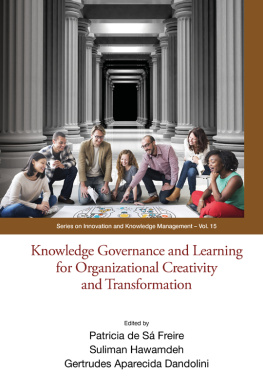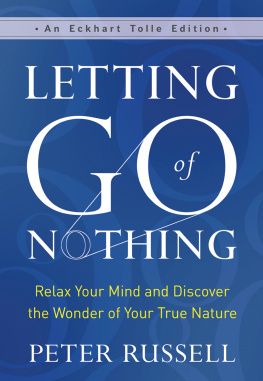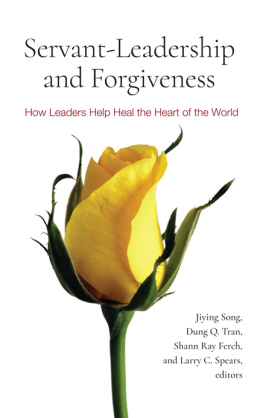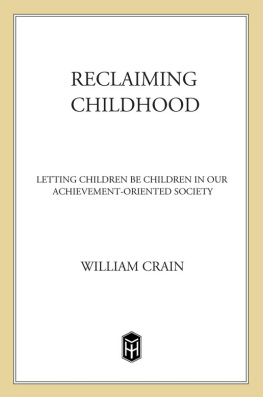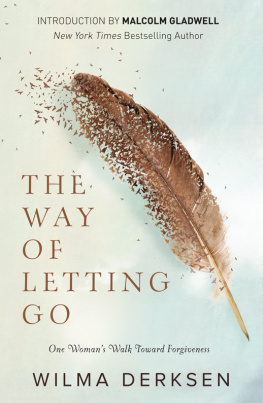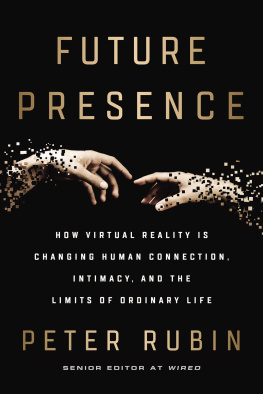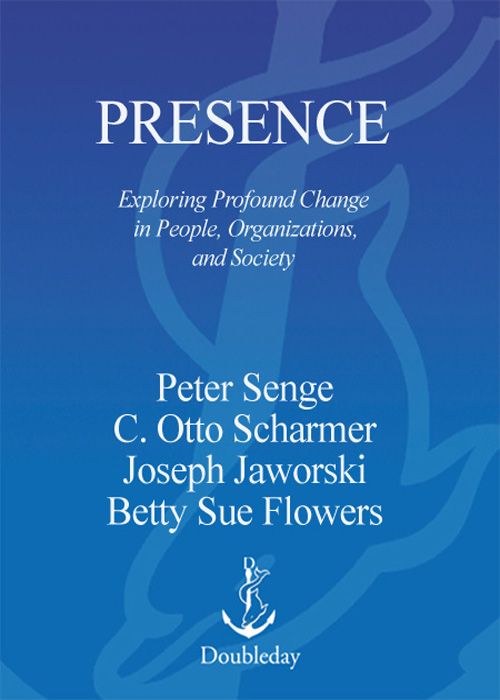

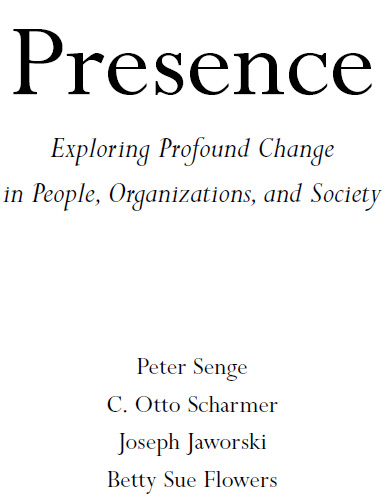
Contents
Dedicated to the memory of Francisco J. Varela
(19462001)
Introduction
Its common to say that trees come from seeds. But how could a tiny seed create a huge tree? Seeds do not contain the resources needed to grow a tree. These must come from the medium or environment within which the tree grows. But the seed does provide something that is crucial: a place where the whole of the tree starts to form. As resources such as water and nutrients are drawn in, the seed organizes the process that generates growth. In a sense, the seed is a gateway through which the future possibility of the living tree emerges.
Introduction
A lthough the four of us come from quite different backgrounds, we do share one thing in common: we have all been part of extraordinary moments of collective awakening, and seen the consequent changes in large social systems.
One of those moments occurred in South Africa in 1990. Peter was in the hill country north of Johannesburg, coleading a three-day leadership workshop that had been offered for fifteen years, but never in South Africa. His colleagues included a black South African and a white South African who were being trained to lead the program on their own in the future. There were thirty people attending; half were white business executives and half, black community organizers. Many took personal risks to participate in the program.
On the last day of the program, the group heard that President F. W. de Klerk was going to give a speech, so they took a break and gathered in front of a television set to watch. This turned out to be the famous speech that set into motion the ending of apartheid. In the middle, de Klerk began to list all the previously banned black organizations that were now being unbanned. Anne Loetsebe, one of the community leaders, was listening with rapt attention. Her face lit up as de Klerk read the name of each organization: the African National Congress (ANC), the Pan Africanist Conference, and so on. Afterwards, she said that as each organization was mentioned, she saw in her minds eye the faces of different relatives who had been detained and would now be coming home.
After the speech the group reconvened and completed the program as usual. Later that afternoon, they watched, as was the custom in the program, a video of Martin Luther King, Jr.s I have a dream speech. This had been banned in South Africa and many of the participants had never seen it before. Finally, the program closed with a check-out that gave each person a chance to say whatever he or she wanted. The first four people made lovely comments about how meaningful it had been for them to be there and what they had learned about themselves and about leadership. The fifth person to speak was a tall Afrikaans business executive. This man, like many of his business colleagues, had been reserved and shown little emotion during the program. He now stood and turned to look directly at Anne. I want you to know that I was raised to think that you were an animal, he said. And then he began to cry. Anne just held him in her gaze and nodded.
As I watched this, says Peter, I saw a huge knot become untied. I dont know how to describe it except to say it was as if a rope simply became untied and broke apart. I knew intuitively that what had been holding him and so many others prisoners of the past was breaking. They were becoming free. Even though Nelson Mandela was still in the Robben Island prison and free elections were still four years in the future, from that moment I never had any doubt that significant and lasting change would occur in South Africa.
For many years, we four have shared a common desire to understand better how such moments and the underlying forces for change they signal come about. We felt that what we had written in the past, at best, described the words but left the music largely in the background. Contemporary theories of change seemed, paradoxically, neither narrow enough nor broad enough. The changes in which we will be called upon to participate in the future will be both deeply personal and inherently systemic. Yet, the deeper dimensions of transformational change represent a largely unexplored territory both in current management research and in our understanding of leadership in general. As Otto puts it, This blind spot concerns not the what and hownot what leaders do and how they do itbut the who: who we are and the inner place or source from which we operate, both individually and collectively.
Of Parts and Wholes
Everything we have to say in Presence starts with understanding the nature of wholes, and how parts and wholes are interrelated. Our normal way of thinking cheats us. It leads us to think of wholes as made up of many parts, the way a car is made up of wheels, a chassis, and a drive train. In this way of thinking, the whole is assembled from the parts and depends upon them to work effectively. If a part is broken, it must be repaired or replaced. This is a very logical way of thinking about machines. But living systems are different.
Unlike machines, living systems, such as your body or a tree, create themselves. They are not mere assemblages of their parts but are continually growing and changing along with their elements. Almost two hundred years ago, Goethe, the German writer and scientist, argued that this meant we had to think very differently about wholes and parts.
For Goethe, the whole was something dynamic and living that continually comes into being in concrete manifestations. A part, in turn, was a manifestation of the whole, rather than just a component of it. Neither exists without the other. The whole exists through continually manifesting in the parts, and the parts exist as embodiments of the whole.
The inventor Buckminster Fuller was fond of holding up his hand and asking people, What is this? Invariably, they would respond, Its a hand. He would then point out that the cells that made up that hand were continually dying and regenerating themselves. What seems tangible is continually changing: in fact, a hand is completely re-created within a year or so. So when we see a handor an entire body or any living systemas a static thing, we are mistaken. What you see is not a hand, said Fuller. It is a pattern integrity, the universes capability to create hands.
For Fuller, this pattern integrity was the whole of which each particular hand is a concrete manifestation. Biologist Rupert Sheldrake calls the underlying organizing pattern the formative field of the organism. In self-organizing systems at all levels of complexity, says Sheldrake, there is a wholeness that depends on a characteristic organizing field of that system, its morphic field. Moreover, Sheldrake says, the generative field of a living system extends into its environment and connects the two. For example, every cell contains identical DNA information for the larger organism, yet cells also differentiate as they matureinto eye, or heart, or kidney cells. This happens because cells develop a kind of social identity according to their immediate context and what is needed for the health of the larger organism. When a cells morphic field deteriorates, its awareness of the larger whole deteriorates. A cell that loses its social identity reverts to blind undifferentiated cell division, which can ultimately threaten the life of the larger organism. It is what we know as cancer.
Next page

